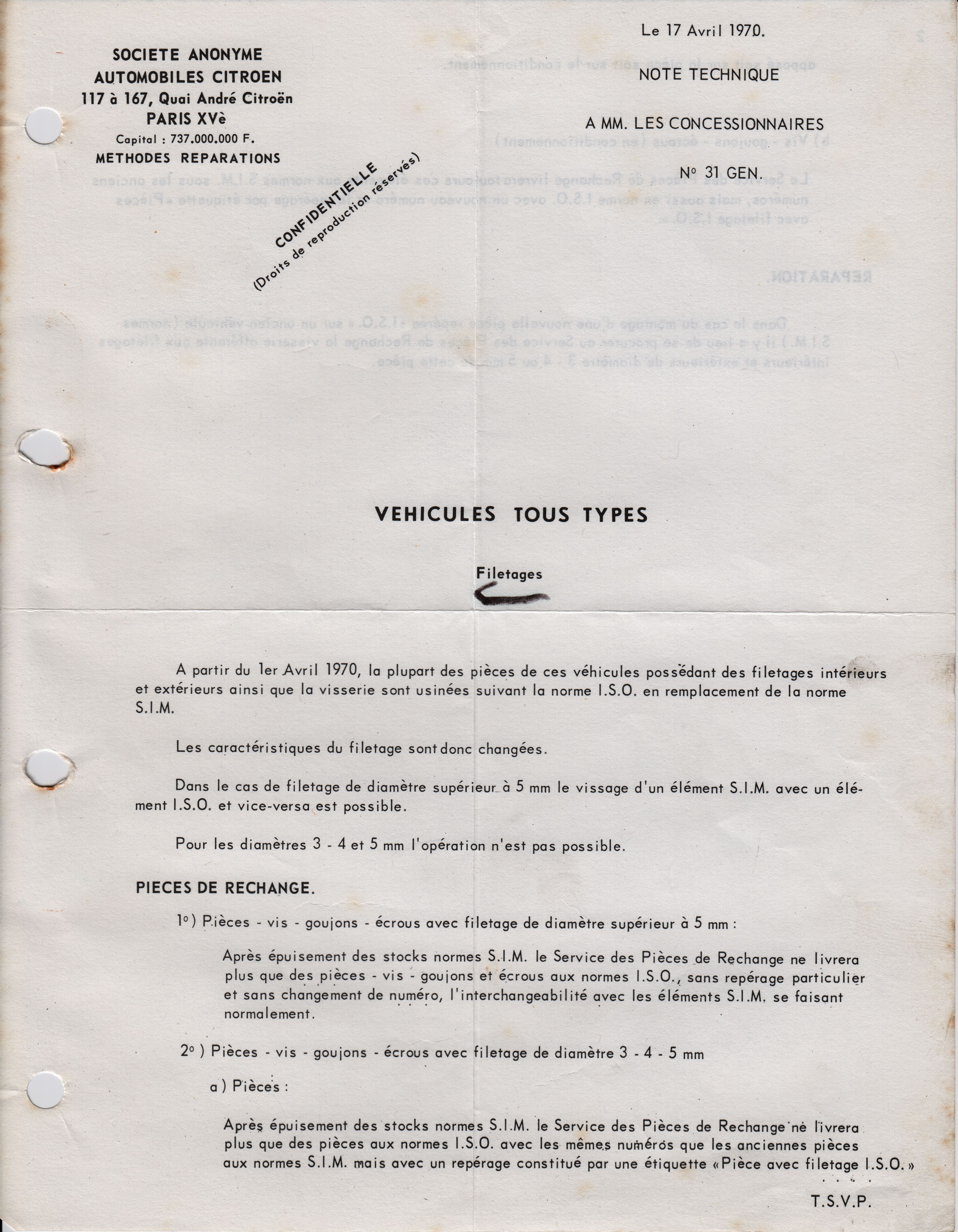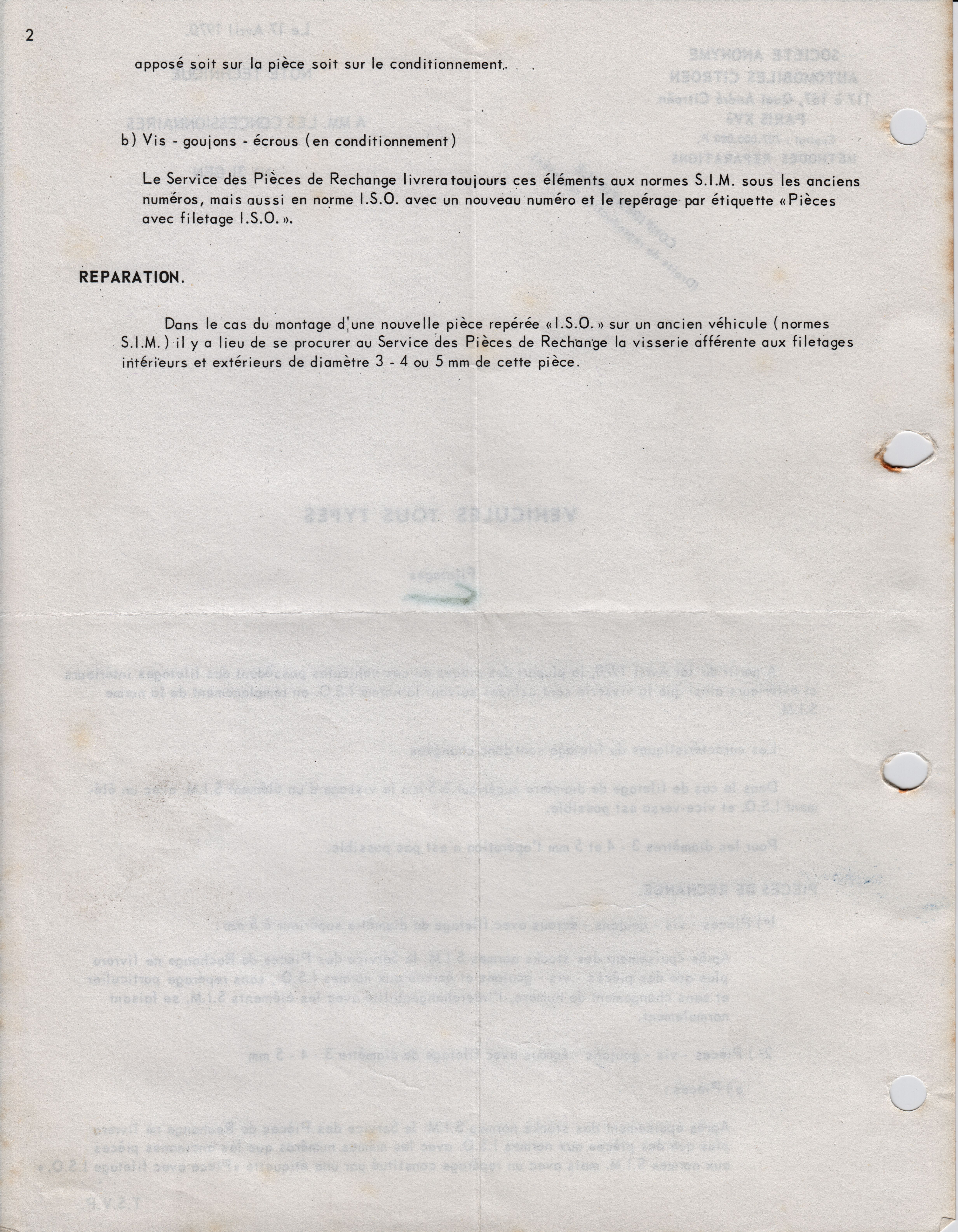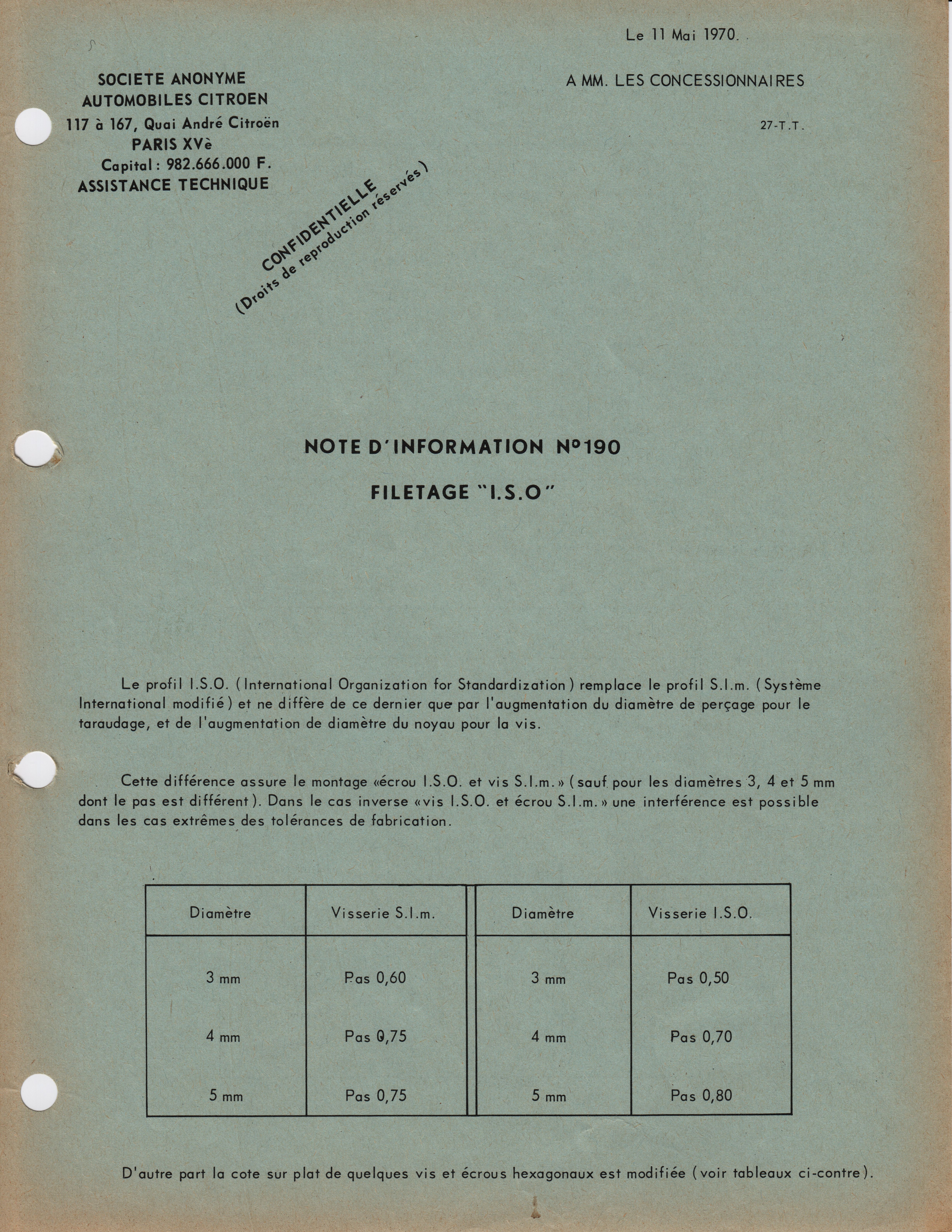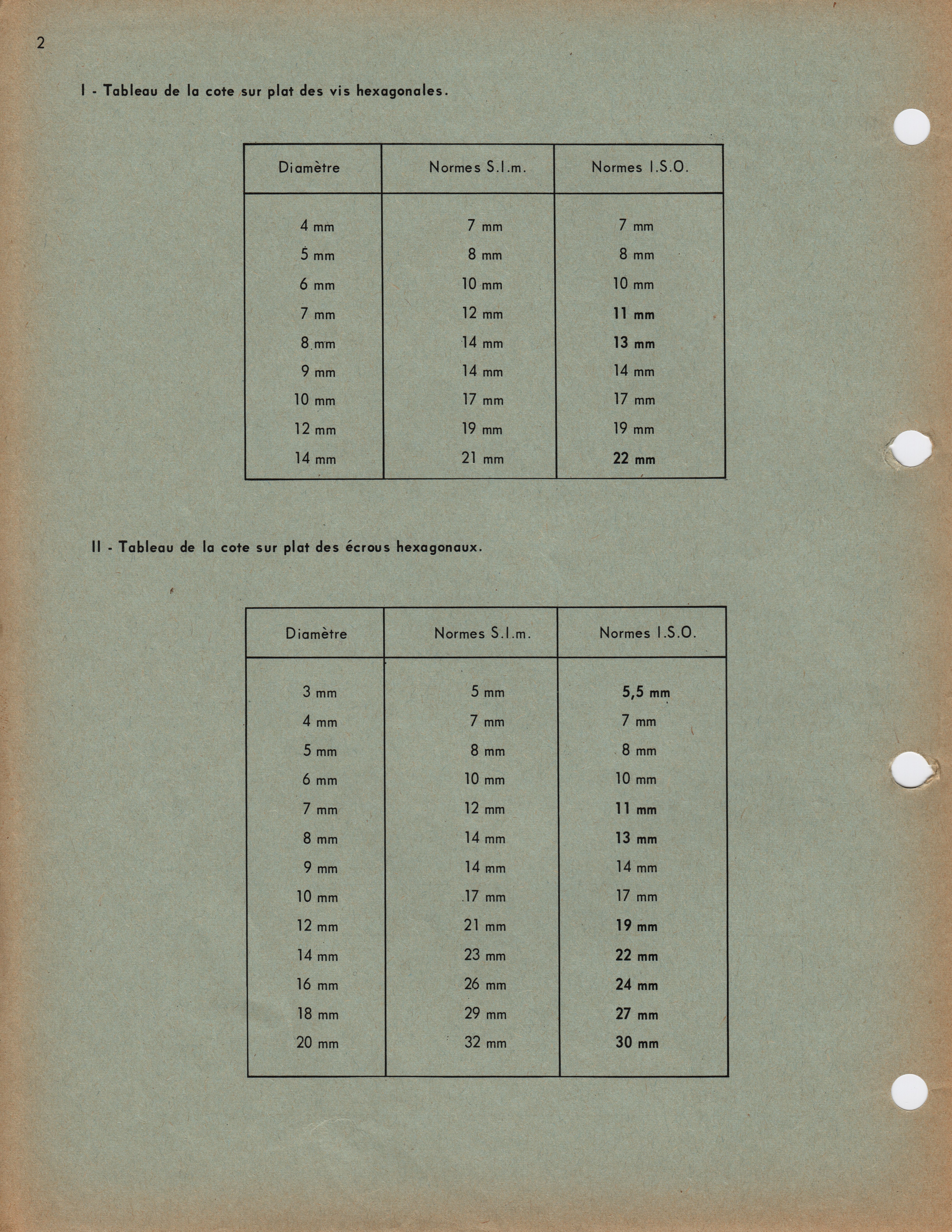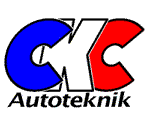

|
|
|
| |
Threading on bolts, nuts etc. |
According to a circular letter (a "note technique") from Citroën to the dealerships from the 11th of May 1970, they previously used an (essentially) French standard for threading, called SIM (Système International Modifié). This was replaced by the now used (essentially German) ISO (International Standardization Organization) standard.
The two standards are listed in the table below.
|
| ||||||||||||||||||||||||||||||||||||||||||||||||||||||||||||||||||||||||||||||||||||||||||||||||||||||||||||
Here, the ISO standard is taken from the circular letter mentioned above, but in practice, there may be deviations, such as 10mm screws and nuts having 16mm width across flats instead of 17mm as they should have had according to the standard.
These changes are most commonly experienced when you are working with 7mm screws and nuts on a Citroën from the 60's, where the original parts have 12mm width across flats, whereas all those that have been replaced over time, usually have 11m width across flats. Generally, this has no consequence, except that you need to have both 11mm and 12mm spanners handy at all times.
More dangerous, however, is the change in pitch of the 5mm threading. If you are not paying attention and using new 5mm screws when mounting for instance the triangular valence panels on a 2CV or the front lining down of a D-model you damage the threading in the nuts that are welded on the car. The screws are strangely hard to twist and once you realize your error, it is hard to do anything about it.
